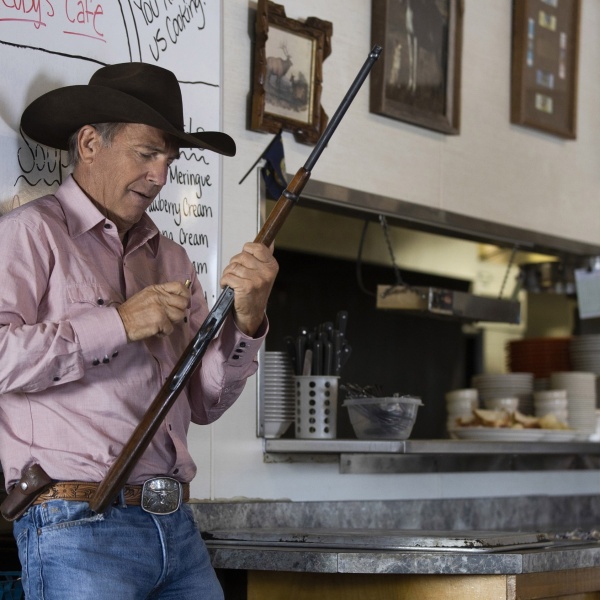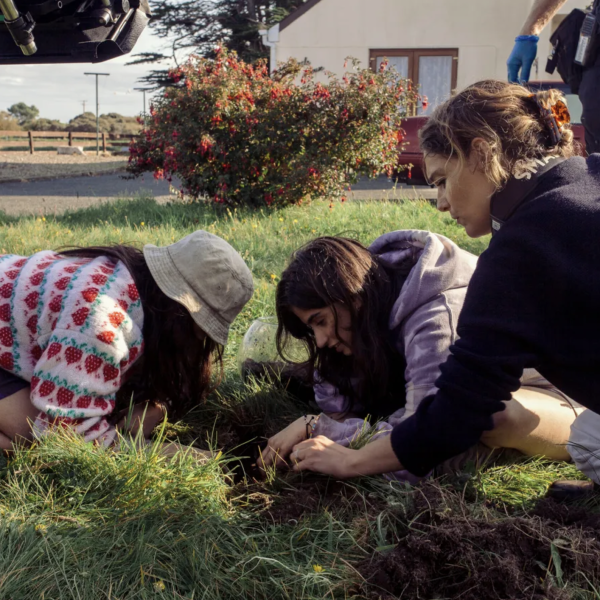The list of directors who get to do exactly what they want onscreen is not long. Even big-budget, A-list directors not named Scorsese or Nolan must work within commercial IP (Napoleon, Joker, Logan, Indiana Jones, et al).
Alexander Payne is different. For one, his budgets have never exceeded eight figures or even close (His biggest, the 2017 “Downsizing,” was around $70 million.) For another, this final-cut pro is always nurturing multiple projects in various stages of completion. Payne has so many knocking around in his head that during our Zoom interview he has to keep reminding himself which film he’s discussing.
The state of his development slate is “undisciplined,” he said. “When I have the time to sit down and work on it and make the time. You get these questions, like: ‘What is your daily writing routine?’ Well, none. I have to say: ‘I’m directing now,’ or ‘I’m editing now.’ I have to tell myself, ‘Oh, I’m writing now.’”
“The Holdovers” gestated for years. Its financier, Miramax, sold the finished film a year ago out of the market at the Toronto International Film Festival; it went to Focus Features for $30 million in a bidding war. A year later, the heart-tugging Christmas movie was runner-up at TIFF for the People’s Choice Award and it’s likely to score some Oscar nominations. Payne has been nominated three times for Best Director and won twice for Adapted Screenplay (“Sideways” and “The Descendants”), but this was the feature-screenwriting debut of sitcom veteran David Hemingson.
Payne’s lead actors usually land nominations, although Paul Giamatti was robbed for “Sideways.” Twenty years later, Academy voters have a chance to remedy that with a superb Giamatti as a hidebound prep school professor in “The Holdovers,” playing against rookie Dominic Sessa as a rebellious student, and wily veteran Da’Vine Joy Randolph as the school cook who buffers their pain while dealing with the loss of her soldier son in Vietnam.

“The Holdovers” began at the 2011 Telluride Film Festival, where Payne checked out the classic 1935 Marcel Pagnol movie “Merlusse.” Payne held on to the idea of a lonely student and his curmudgeon teacher left behind at the school at Christmas. “It was stealable,” he said. “Kids who have nowhere to go over Christmas break. And then the very disliked teacher taking care of him who has a wonky eye. Even in the French movie, he has a wonky eye. So that’s the setup I took. And I didn’t know what the hell the story was going to be.”
Somehow, the movie taps into a large and hidden demo: Christmas orphans. Neglected people over the holidays “never stops during life,” Payne said. “They always say that a very large percentage of suicides happen between Christmas and New Years.”
The premise stayed on a back burner until about five years ago, when Payne came across a pilot by Hemingson set at an East Coast elite boarding school. “I just called the guy up,” he said. “And I said, ‘I’ve never heard of you. I like your pilot. I don’t want to do it. But would you consider writing a feature based on an idea I have set in that same milieu?’ And he agreed. And that’s how miraculously it came about.”
Payne collaborated with other writers on his eight prior features; only on “Nebraska” did he also not take a shared writing credit. “‘Nebraska’ reached me as a script,” he said. “I did some rewriting and I got under the hood and tinkered. But that’s a Bob Nelson script. This was my first experience directing a writer.”
Payne not only wanted Hemingson to execute his ideas, he said, “but also bring stuff I never could have thought of, like Mary, the cook character [Da’Vine Joy Randolph]. I hadn’t thought of her. But that was organic: ‘Oh, here are these boys stuck over Christmas break? Well, who’s cooking for them? Well, this person, who is she? What would be interesting and poignant to add to her character?’ That’s how she came about. That’s what you want from your collaborators — a whole bunch of stuff you never could have thought of or aren’t capable of. So the word director, not creator, applies. You’re directing the creativity of others.”
The film is set in 1970, when Payne was nine. “For practical reasons, the screenwriter and I couldn’t let it be a contemporary film, because there are no more single-sex boarding schools,” said Payne. “We wanted an all-boys’ [school], so it had to be a period film. Not the 1950s. That’s Peter Weir territory. And then our Ouija board stuck on 1970. Yeah, just a neat period. And then it had some political winds blowing through it that gives the screenwriter more to chew on.”
As a director, Payne had fun emulating the shooting styles of the period, from zooms to dissolves. “I don’t know, man, when it came time to directing it, wouldn’t it be fun now to make this not just be set in the ’70s but make it feel as though it had been shot in the ’70s? I have dissolves in all the films. Even in my contemporary movies, Kevin Tent the editor and I love dissolves. And I like zooms, when well-deployed. And wipes? I still like wipes.”

Payne’s films are known for being emotional, but he uses a documentary approach. “I use that word myself,” he said. “The screenplay? Does it track as a story that could actually happen in real life? Is it as free of contrivance as possible? Then, in casting, having not just professional actors, but non-professional actors and non-actors, people off the street. And certainly in production design. I always think about my movies the same way that my restaurant father told me to think about a restaurant: ‘There are three keys to a successful restaurant: Location, location and location.’”
Payne is proud that “The Holdovers” is 100 percent location. “I’m trying to capture Nebraska, or Honolulu in that upper class [“The Descendants”] or Massachusetts in general and the world of private schools in particular,” he said. “Just that I’ve somehow got the rhythms right, so that people from those different worlds can see the movie and say, ‘Yeah, he more or less got it right.’ It’s still a movie. But I can talk about having the patina of reality in my films.”
To construct the fictitious Barton Academy, Payne and Tent knit together five different school locations (Groton, Deerfield, Northfield Mount Hermon, Saint Mark’s, and public school Fairhaven). “When I did ‘Nebraska’ 10 years ago, that fictitious town of Hawthorne, Nebraska was constructed of seven different small towns in northeastern Nebraska,” Payne said. “Here, this one has the good cafeteria. This one has a good gymnasium. This one has a good exterior. Whatever it is, you put it all together.”
As the movie’s start-date loomed, Payne worried that he hadn’t found the obnoxious, entitled, bereft prep school guy whose newly married mother and stepfather leave him behind for their holiday honeymoon. The New York-based casting director went through some 800 submissions. “We didn’t find this character,” said Payne. “Finally, we got around to something we were going to do anyway, even out of politeness. I always try to cast in the locations where we’re shooting. And so we called up the drama departments of the schools and talked to the drama teachers: ‘Oh, yes, we have some students who would be be happy to audition for your movie!’ And there he was. [He needed to be] believable, interesting, able, and ultimately, possess a face of someone whom you would like to see cured, helped, if not saved, by the story that this movie is telling. Finding him, and at the last minute — because if you didn’t nail that part, then the movie is going to suck or you can’t make the movie — was a minor miracle.”
Sessa gets the audience to root for him, from the way he stands up to Giamatti to how he dissembles when a young girl asks if he’s looking down her shirt. “And just to see someone who had never been in front of a camera before,” said Payne, “being able to do it and hold his own with Paul Giamatti and have great comfort in front of the camera, was something to watch.”
Not unlike the wine maven he portrayed in “Sideways,” Giamatti plays an isolated man who masks his insecurity with wit. “They’re certainly cousin characters,” said Payne. “We have a good shared sensibility and a strong sense that we’re making the same movie together. I felt that 20 years ago with ‘Sideways’ and I felt it again now. And for me as a director, and with these screenplays, he’s somehow the perfect vessel of tone. He can do comic things dramatically, and dramatic things with great comic panache. And were I to make movies quickly enough to have an alter ego actor as have many great directors, it would be him.”
The movie’s most entertaining scenes pit the professor against the student. “One thing that the movie has in common with ‘Sideways’ is that Paul is a phenomenal lead and also a phenomenal team player,” said Payne. “The friendship that he was able to forge on screen with Thomas Haden Church 20 years ago — they were two disparate human beings as actors and then two disparate characters. That’s fine work by both actors to find that and make that work. Same thing here, too. Here’s Mister Experienced with Mr. Fresh-Off-the-Boat actor and Dominic’s got the chops, as untrained as he is, but Paul — this sounds corny — is a generous actor in that he, when you’re looking at him, what he gives you is 100 percent real. It makes his interlocutor feel ‘realer’ and there’s good chemistry between the two.”

Next up: Payne wants to shoot a Paris-based film, in French. “It’s based on an article in Vanity Fair about five years ago about rival antique chair dealers. That script is maybe 65 percent of the way there. I was working with a French screenwriting team, they do Jacques Audiard movies. And they wrote it in French, did a couple of drafts that I had translated in English, and Jim Taylor and I have been doing some work on it. And then we’re going to get it towards some [state] directable by me.”
Payne is also developing an 1880s Nebraska Western with Hemingson, who likes Westerns more than Taylor. “It’s gonna take a minute, these things take a long time,” said Payne. “But he shares my zeal.”






